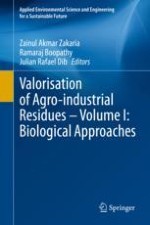Agriculture and industry are the two most important economic sectors for various countries around the globe, providing millions of jobs as well as being the main source of income for these countries. Nevertheless, with the increasing demand for agricultural and industrial produce, huge amounts of waste are also being produced. Without proper management, this waste (both liquid and solid) poses a serious threat to overall environmental quality, mainly due to its toxicity and slow degradation processes. Current approaches are effective but would normally require huge capital investments, are labour intensive and generate potential hazardous by-products. As such, there is a need for alternative approaches that are cheaper, easier-to-handle and have a minimum potential impact on environmental quality.
This book presents up-to-date approaches using biological techniques to manage the abundance of waste generated from agricultural and industrial activities. It discusses techniques such as bioconversion, biodegradation, biotransformation, and biomonitoring as well as the utilization of these wastes. A number of chapters also include individual case studies to enhance readers’ understanding of the topics.
This comprehensive book is a useful resource for anyone involved in agricultural and industrial waste management, green chemistry or biotechnology. It is also recommended as a reference work for graduate students and all agriculture and biotechnology libraries.
